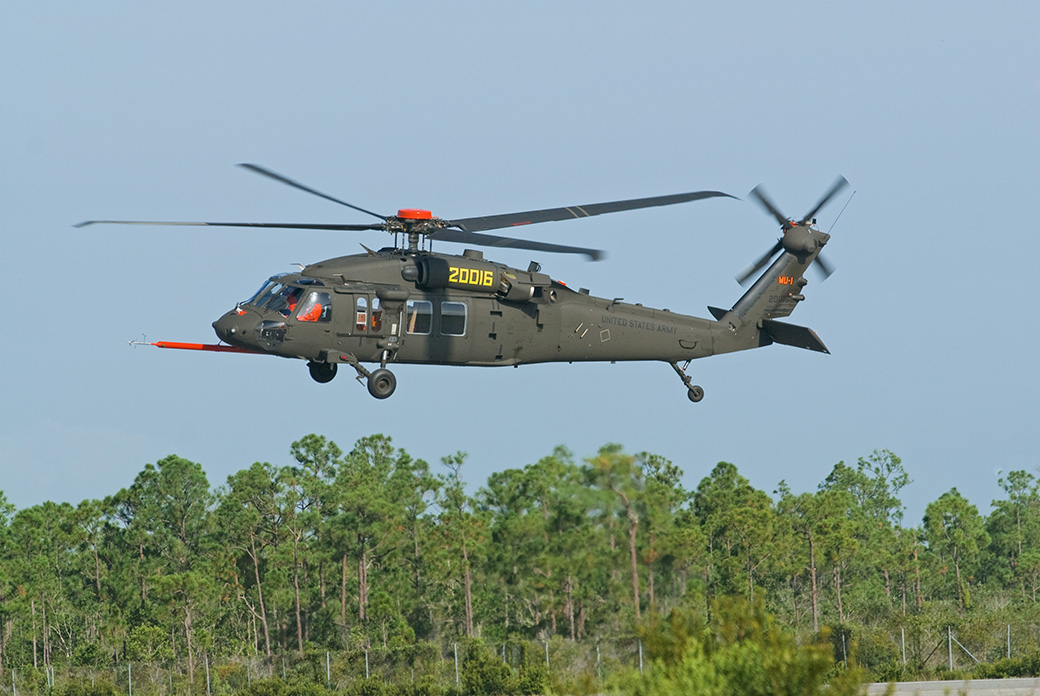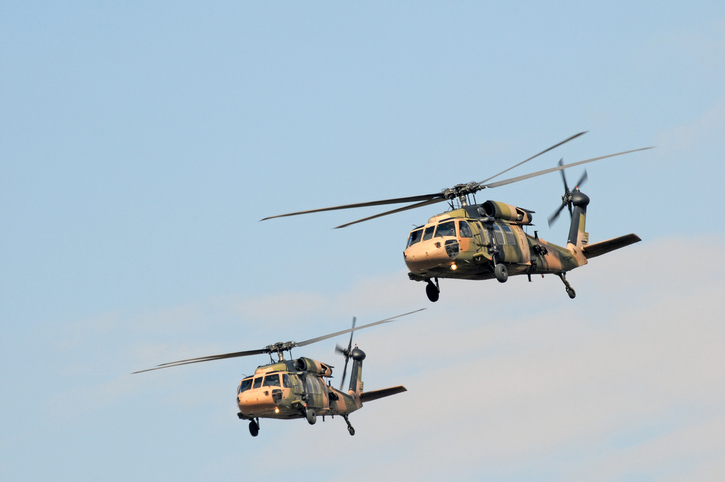Revealing the Sikorsky S 70: Developments and Advances in Helicopter Design
Revealing the Sikorsky S 70: Developments and Advances in Helicopter Design
Blog Article
High-Performance Multi-Role Rotorcraft Featuring Advanced Cockpit Technologies and Integrated Sensor Equipments
The world of rotorcraft innovation has actually seen notable developments in recent times, especially in the realm of high-performance multi-role rotorcraft geared up with advanced cabin innovations and effortlessly incorporated sensing unit systems. In the following conversation, we will check out the evolution of rotorcraft modern technology, delve right into the world of sophisticated cabin developments, and analyze the effects of integrated sensor systems on the operational flexibility and effectiveness of contemporary rotorcraft.
Development of Rotorcraft Innovation
The evolution of rotorcraft technology has actually been noted by significant developments in aerodynamics, materials, and propulsion systems, shaping the capacities and performance of modern rotorcraft. Aerodynamic renovations have enhanced the performance and ability to move of rotorcraft, enabling enhanced rate, dexterity, and stability throughout flight (sikorsky s 70). Technologies in materials, such as making use of composite materials and advanced alloys, have actually caused lighter yet more powerful rotorcraft frameworks, improving overall performance and resilience. Furthermore, innovations in propulsion systems, including much more effective engines and ingenious propulsion innovations, have actually made it possible for rotorcraft to achieve greater altitudes, faster speeds, and better hauls.
These advancements have not just transformed the abilities of rotorcraft yet have likewise broadened their applications throughout various industries, consisting of army, business, and emergency situation services. The constant development of rotorcraft modern technology remains to drive innovation in the field, pressing the borders of what is feasible and shaping the future of vertical trip.
Advanced Cabin Innovations
Building upon the foundational advancements in the rules of aerodynamics, products, and propulsion systems, the realm of rotorcraft technology currently changes focus towards introducing Advanced Cockpit Innovations. The combination of cutting-edge technologies within the cabin environment plays an important function in enhancing the functional capabilities, security, and effectiveness of contemporary rotorcraft. sikorsky s 70. Advanced Cockpit Innovations include a broad array of attributes made to supply pilots with boosted situational understanding, structured information monitoring, and user-friendly control user interfaces
Among the crucial developments in cockpit layout is the implementation of glass cabins, which change conventional analog assesses with high-resolution display screens. These electronic systems provide personalized layouts, real-time information combination, and improved readability, making it possible for pilots to accessibility vital information at a look. Furthermore, advanced avionics systems, such as fly-by-wire controls and boosted fact display screens, are revolutionizing how pilots communicate with the airplane, enabling accurate control and boosted decision-making capacities.


Incorporating innovative cockpit innovations not just enhances pilot performance but additionally adds to overall mission performance and security in complex operational environments. By leveraging cutting edge innovations within the cabin, rotorcraft suppliers are setting brand-new requirements for operational excellence and mission success.
Integrated Sensor Systems
With the evolution of rotorcraft innovation, the combination of advanced Integrated Sensor Solution has become critical in boosting operational efficiency and security. These Integrated Sensor Solutions incorporate a vast array of technologies that give essential data for different functions such as navigating, monitoring, targeting, and ecological monitoring. By perfectly integrating sensors like radars, cams, linked here lidar, and infrared systems into rotorcraft, drivers can profit from improved situational understanding, improved goal capacities, and lowered pilot work.
One key benefit of Integrated Sensing unit Systems is their capability to collect real-time information and supply actionable understandings to pilots and goal operators. For instance, progressed radar systems can find and track targets over cross countries, enabling very early threat detection and efficient action preparation. In addition, incorporating electro-optical and infrared cameras enables rotorcraft to carry out reconnaissance and monitoring missions with accuracy and precision.
In significance, the assimilation of advanced sensor innovations into rotorcraft not only improves functional efficiency yet also adds significantly to general objective success and crew safety. As rotorcraft remain to develop, the duty of Integrated Sensing unit Systems will definitely continue to be at the center of advancement in the aerospace industry.
Operational Flexibility and Performance
Enhancing operational versatility and efficiency in rotorcraft is a natural progression from the integration of sophisticated Integrated Sensor Solutions. By leveraging the understandings and data offered by these sophisticated sensor systems, rotorcraft can maximize their performance throughout numerous goals and environments.
Operational flexibility includes the ability of rotorcraft to adjust to various roles and circumstances effectively. With advanced cockpit modern technologies and integrated sensing unit systems, rotorcraft can perfectly shift between jobs such as search and rescue, medical emptying, monitoring, and much more. This flexibility improves the rotorcraft's capability to fulfill diverse operational demands without calling for comprehensive reconfiguration.
Efficiency in rotorcraft procedures is essential for making the most of mission efficiency and resource usage. Integrated sensor systems play an essential duty in enhancing operational performance by offering real-time information on weather, surface mapping, target monitoring, and much more. This information enables pilots to make informed choices quickly, optimize flight paths, conserve fuel, and boost total mission efficiency.
Influence On Modern Aviation Workflow

In addition, the assimilation of innovative sensing units promotes boosted objective planning and execution, making it possible for rotorcraft to do a vast array of jobs with improved precision. From search and rescue procedures to aerial firefighting and police objectives, the capabilities of modern rotorcraft outfitted with innovative cabin innovations and incorporated sensor systems are exceptional.
Furthermore, the influence of these innovations prolongs past operational effectiveness to cost-effectiveness and sustainability. By enhancing flight routes, fuel intake, and maintenance routines, high-performance rotorcraft furnished with innovative cabin technologies and sensing units add to decreasing functional costs and ecological influence, making them vital possessions in modern-day aviation procedures.
Conclusion
In conclusion, the high-performance multi-role rotorcraft with innovative cabin technologies and integrated sensing unit systems stands for a significant evolution in aeronautics modern technology. These innovations improve operational flexibility and performance, eventually impacting contemporary aeronautics operations in a positive method. The assimilation of these advanced innovations permits improved abilities and efficiency in numerous goal situations, showcasing the continued check it out advancement of rotorcraft modern technology in the aviation industry.
The realm of rotorcraft modern technology has seen remarkable improvements in current times, particularly in the realm of high-performance multi-role rotorcraft furnished with cutting-edge cockpit modern technologies and effortlessly integrated sensing unit systems. From enhanced mission adaptability to enhanced operational efficiency, the merging of innovative cabin modern technologies and integrated sensor systems has actually ushered in a new age of possibilities for rotorcraft applications. In the complying with discussion, we will certainly check out the advancement of rotorcraft innovation, dive into the realm of advanced cabin innovations, and check out the implications of integrated sensor systems on the functional versatility and performance of contemporary rotorcraft.

Report this page